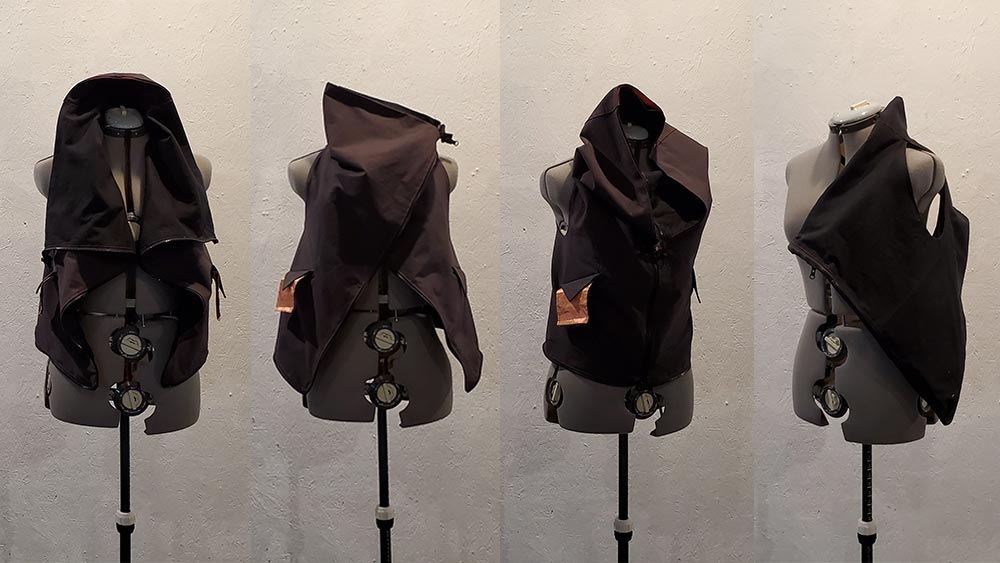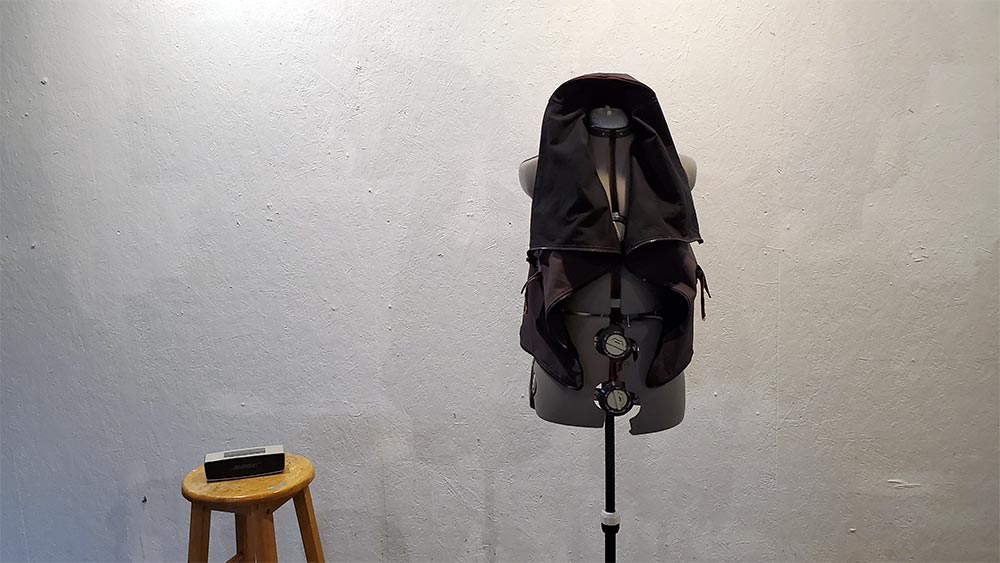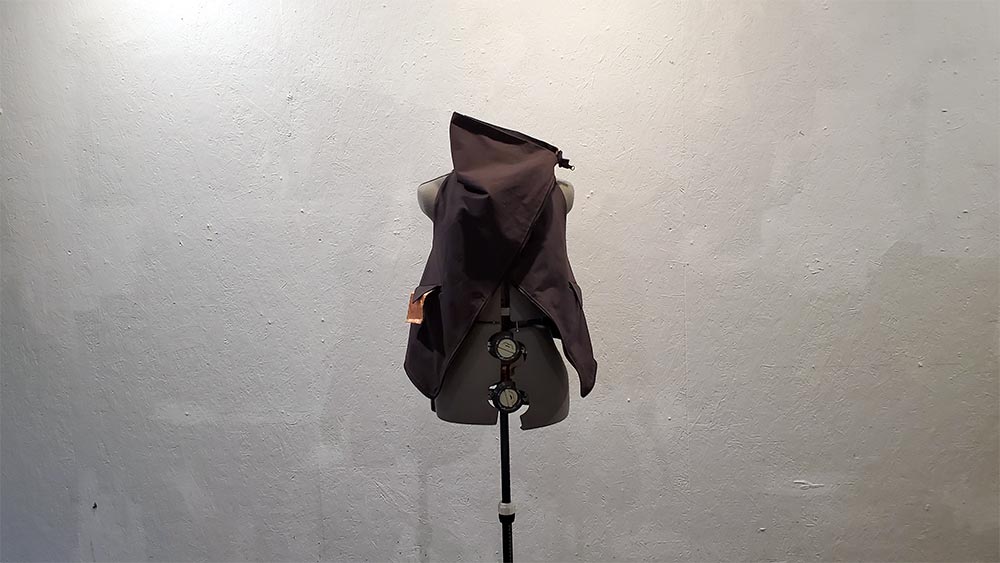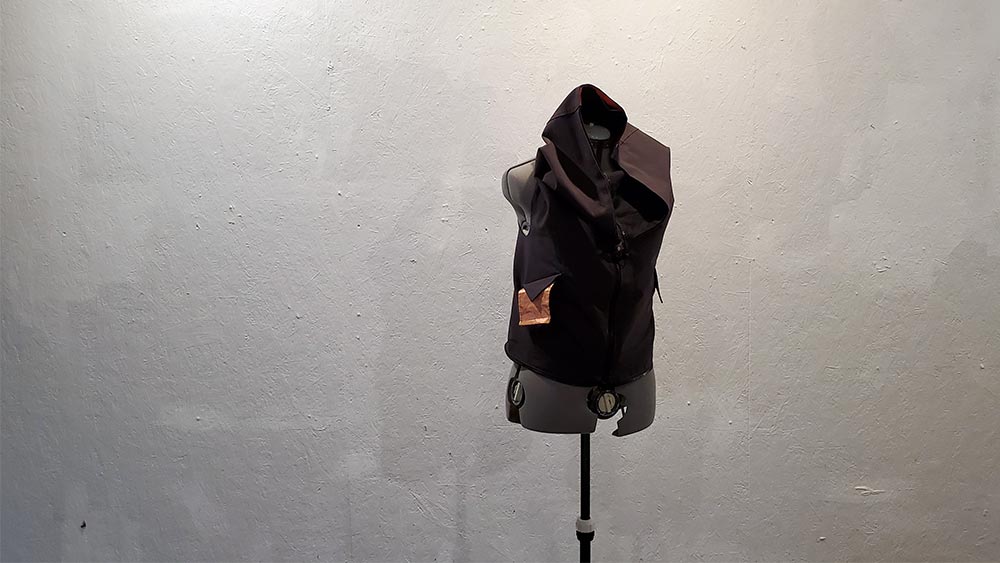Signal Lost Vest is an anti-surveillance pocket and protest tool. It examines pockets as spaces for reclaiming control of our privacy. The vest contains two faraday welt pockets made from copper conductive fabric. These functional pockets prevent tracking by blocking all wireless signals to and from connected devices. When worn, the vest offers an additional layer of facial and bodily protection. The vest itself becomes a large pocket that can be taken off, zipped up, and worn as a bag to store gear or transform the wearer into an altered appearance.
Context
Pockets are a form of individual control. There are worlds inside them, microcosms of selves, stories of lives. They allow us to carry everyday tools that take many forms: objects to manipulate the environment, mark identity, and communicate ideas. The power of pockets lies not only in their ability to convey, but also to conceal. They are vessels of privacy. The pocket’s digital counterpart is a smart phone. It has the analogous traits and aforementioned abilities, but smart phones were never designed for privacy. Apps discretely collect GPS location data and other information to sell to various groups, from political parties to police to marketers to governments. Our smart devices are insecure pockets for our data, leaking information about where we live, who we meet, and what daily activities we engage in. While one piece of data is innocuous, many pieces stitched to together reveals rich patterns of behavior. This digital pocket becomes a tool for your visibility, exposing you to commercial or political manipulation or government intimidation.
Protesters are a group at especially high risk of surveillance. The number of first time protesters surged following the police killing of George Floyd. Many of them lacked basic knowledge and tools to protect themselves against insidious data collection practices during demonstrations. This vest was born of this observation and conceived of as a way of thinking about clothing as a tool to protect our physical bodies and our digital selves. For the vast majority of people, these two can no longer be separated. This has become increasingly evident since the 2016 election, the onset of Covid-19, and the constant, brutal harm done to black and brown bodies throughout the history of America. This vest questions how we can control when and to whom we are visible.
Signal blocking pockets are not a strategy to dismantle the systems of power that contribute to oppression and systemic racism. It is a tactic for individual disruption. That being said, clothing and fashion are often trivialized or cast aside as tools for achieving higher social goals. Perhaps there is power in reconsidering their relationship to current systems as we seek to construct more inclusive, anti-racist social, economic, and political frameworks.
I hope to make the pattern and process available in the coming weeks. If you are participating in protests and would like to make one, but do not have the experience, tools, space, and/or time, please reach out.
Created at The Wassaic Project in August 2020.
Project sources and research in this Are.na channel.
Inspired by previous collaborations with Irene Posch, Admar Schoonen, Beam, Celine Marcq, Hannah Perner-Wilson, Lara Grant, Rachel Freire, and Zoe Romano.






